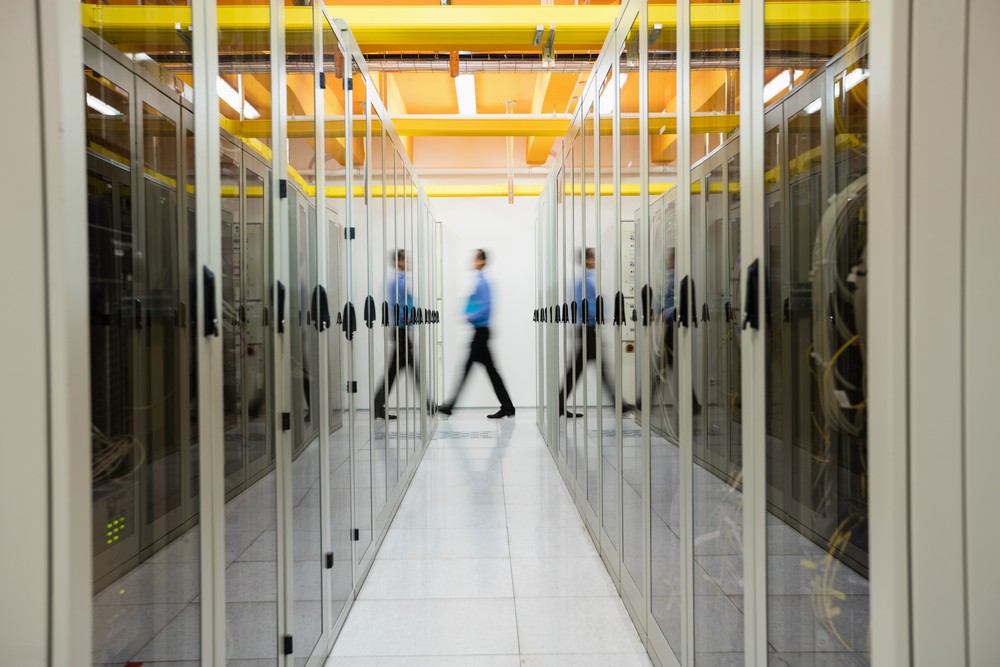Each company faces its own unique set of challenges. Amazon, for example, is heavily reliant on a delivery infrastructure that currently produces millions of tons of emissions, whereas Microsoft and Intel are not. However, one area that will require all tech giants to focus on is data centres. These computer server facilities consume roughly 1% of all electricity worldwide – addressing this and transforming them to be more sustainable will be critical if those tech companies are to meet the various zero carbon and energy pledges they have made.
It’s important to note that much progress has already been made on improving the sustainability credentials of data centres in the past decade. Despite the volume of computing increasing fourfold in data centres between 2010 and 2018, energy consumption only grew by 6%, thanks to the efforts invested in achieving efficiency gains.
To date, many data centre operators have tackled the most straightforward efficiency saving opportunities. The most high-profile of these is cooling. Previously, the norm was to keep data centre temperatures operating at 20-22 degrees Celsius. Nowadays, it’s not uncommon for data centres to be at temperatures closer to 27 degrees Celsius. This change has had a significant impact on efficiency because less energy is required now temperatures don’t need to be as low.
In addition to this, there’s also been adoption of hot and cold aisle containment in recent years. This is where air flow is managed so that cold air from air conditioning doesn’t mix with the hot air emitted from the servers. The server racks are lined up in alternating rows, with the hot air output from servers on both sides of the aisle, which ensures the hot air is contained in that row. Meanwhile, the next aisle over is kept cool by positioning the server intakes facing one another.
Despite progress in efficiency in recent years, such as with the cooling, there is more that can and should be done.
Optimisation and reconfiguration
First and foremost, there are further energy savings that can be achieved by optimising the operation and performance of IT equipment. This takes two forms: replacing outdated, inefficient equipment with modern alternatives in existing data centres or specifying up to date equipment in new builds; and, reconfiguring existing equipment to operate in a more efficient manner.
The first of these, committing to the use of new, advanced equipment, has clear benefits. A server that uses less watts usually means fewer watts are required for cooling. Not only is the latest server technology better for the environment, there is a cost saving for operators over the useful lifetime of the server. Multiply that cost saving across an entire data centre of, say, 50,000-80,000 servers, and total savings could equal millions of pounds. The performance of a newer server is also superior to previous models, so often fewer servers are needed to handle the same load.
The second form, reconfiguration, can be more challenging, but is just as important. Here, equipment is assessed and updated to be more efficient. Take a fan on a server as an example. The fan is usually set to run at maximum speed, which requires the air conditioning to work harder. Often, the fan isn’t required to work at maximum speed. Instead, it can be set to a lower speed, which reduces the demands on air conditioning and brings down energy use further.
These two activities present proven opportunities to tackle carbon emissions. However, an area of possible opportunity yet to be explored properly is the carbon footprint of data centres – and, by this, I mean the manufacturing of everything that goes into a data centre and its very construction.
Reducing carbon footprint
At present, much of the infrastructure for data centres has a high carbon footprint. Concrete is a good example of this – it is said to be responsible for 4-8% of the world’s CO2. And then there are other materials, such as copper, which are heavily used in data centres even though many operators aren’t clear on what the footprint is.
To tackle the challenges of carbon footprint, two things are needed. First, more research is required to understand the real carbon footprint of the various materials used in a data centre. Secondly, the way in which materials are used needs to advance to improve performance and reduce footprint.
The key to understanding a datacentre’s embodied carbon footprint lies in establishing the footprint of each component used to build the facility and their origin. This is because it is possible to find two materials of similar specification which have vastly differing carbon footprints. For example, most metallic components are forged or ‘founded’ at some point in their production. One foundry may use nuclear power as its heat source, whereas a similar foundry may use a fossil fuel derived energy. Understanding these differences allows designers of data centres and those commissioning the builds to make informed choices when choosing their datacentre supply chain.
***
Currently, 59% of the global population has access to the internet. This will grow – forecasts suggest to 90% by 2030. Demands on data centres are only going to increase during this timeframe, and there’ll likely be a major surge in data being processed when emerging technologies, like autonomous driving, hit the mainstream.
In addition to continuing to make equipment more efficient, there is a small window of opportunity for big tech companies to further develop their understanding of factors such as data centre carbon footprints and recycling, and address the challenges they present. It’s important this is done sooner, rather than later – otherwise it could be an uphill battle for those tech giants to meet their sustainability pledges.





